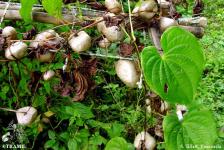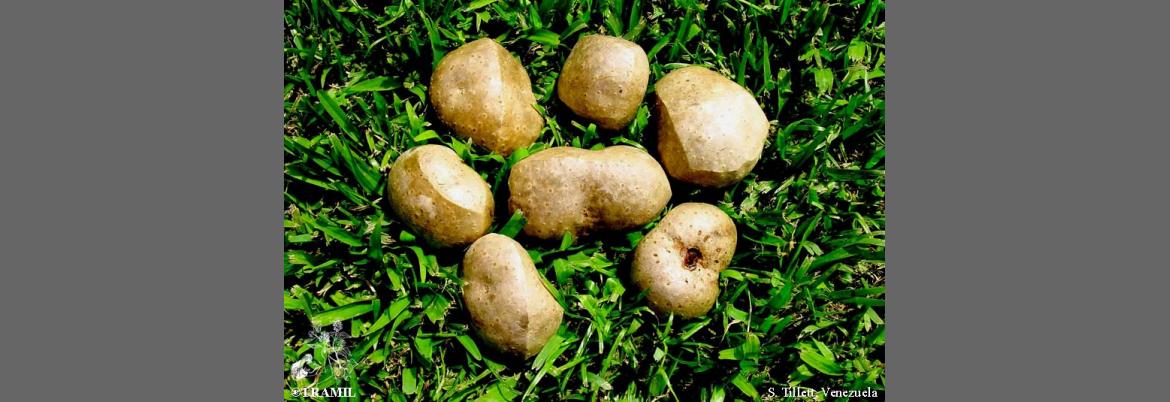1 WENIGER B, ROUZIER M, 1986 Enquête TRAMIL. Service Oecuménique d'Entraide SOE, Port au Prince, Haïti.
2 WHO, 1991 Guidelines for the assessment of herbal medicines. WHO/TRM/91.4. Programme on Traditional Medicines, WHO, Geneva, Switzerland.
3 IDA Y, KUBO S, FUJITA M, KOMORI T, KAWASAKI T, 1978 Furanoid diterpenes from plants of the Discoreaceae. V. Structure of diosbulbin D, E, F, G & H. Justus Liebigs Ann Chem. p818.
4 IDA Y, NODA W, KUBO S, KOMORI T, KAWASAKI T, 1978 Furanoid norditerpenes from Dioscorea plants. VII. Structures of diosbulbinosides D & F. Chem Pharm Bull 26:435.
5 MURRAY R, JORGE KHAN N, SHAHJAHAN M, QUAISUDDIN M, 1984 Diosbulbin D and 8-epidiosbulbin E acetate, norclerodane diterpenoids from Dioscorea bulbifera tubers. Phytochemistry 23(3):623-625.
6 KHAN N, NUR-E-KAMAL M, SHAHJAHAN M, HASAN C, 1986 Chemical investigation of tubers of Dioscorea bulbifera l. Variety sativa. Khaka Univ Stud Part B 34(1):111-113.
7 GUPTA D, SINGH J, 1989 Hydroxy-acetophenone derivatives from Dioscorea bulbifera. Phytochemistry 28(3):947-949.
8 IRELAND C, SCHWABE W, GOURSEY D, 1981 The occurrence of batatasins in the Dioscoreaceae. Phytochemistry 20:1569-1571.
9 RAGHUNADAN K, JOLLY C, 1987 Starch from Dioscorea bulbifera. Indian J Pharm Sci 49(6):233-236.
10 DUKE JA, ATCHLEY AA, 1986 Handbook of proximate analysis tables of higher plants. Boca Raton, USA: CRC Press. p64.
11 ABDEL-AZIZ A, BRAIN K, BASHIR A, 1990 Screening of Sudanese plants for molluscicidal activity and identification of leaves ofTacca leontopetaloides L. O. Ktze (Taccaceae), as a potential new exploitable resource. Phytother Res 4(2):62-65.
12 CHEN L, 1988 Treatment of 11 cases of malignant lymphoma. Zhejiang J Trad Chin Med 23(8):365-366.
13 SATO A, 1989 Studies on anti-tumor activity of crude drugs. I. The effects of aqueous extracts of some crude drugs in short term screening test. Yakugaku Zasshi 109(6):407-423.
14 YAN Z, 1989 Adverse reactions to Chinese drugs, 384 cases. Chin Pharmaceut J 24(3):166-169.
















